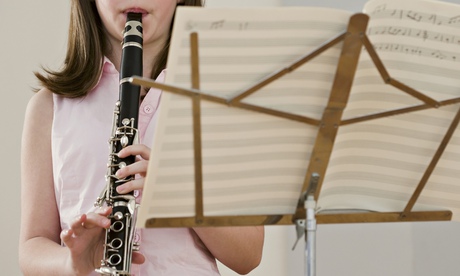
Is the aim of music education funding to enable every young person to have access to instrumental tuition? Or is it to enable lifelong participation in and enjoyment of music? Both are mentioned in the 2011 National Plan for Music Education but each requires a different set of activities if it is to be adequately met.
Inclusion: diversifying the offer
Musical inclusion applies to the types of learning opportunities on offer, the genres of music included, the diversity of the learners, the variety of settings and environments in which learning can take place and the extent to which learners are given choices regarding what they learn and how.
The concept of inclusion is contained in the National Plan for Music Education. However, a recent report (pdf) analysing data returns from music hubs in 2013 showed that just 12.8% of participants received a subsidy in tuition, compared with 18.3% of children being eligible for free school meals nationally.
Similarly, the age range of hub participants was heavily biased towards Key Stage 2 (54% of all participants were aged 7-11, compared with 25% of the youth population). The range of learning was also dominated by whole class and smaller ensemble opportunities and orchestral instruments. The authors of the report noted "a core repertoire of mainly classical and chamber music, tiered progression ensembles" and "few examples of hip-hop, digital, folk or ethnic/world ensembles".
If we want music education to enable people to be musical for life, we must diversify the offer beyond instrumental tuition, which does not necessarily foster life-long participation in music and can have relatively little impact. Despite the broad intentions of the national plan, some are judging its success by how many children have engaged with an instrument, for whatever duration, at some stage in their primary education. Now is the time to think collectively about the intended outcomes of hub funding over and above the numbers of children taking part at this level.
Lack of working in partnership
Music education supported through exciting and committed collaborations between schools, music services and cultural organisations (ie the hub model) can offer much to children and young people, and there are some strong examples of this taking place around the country.
However, recent Youth Music research shows that there is a persistent lack of inclusivity among those being funded to provide out-of-school services and lead hubs. Only 29% of our grant holders reported that their work was part of a local music education hub, suggesting that in many cases organisations working with diverse young people, using diverse practices and working across diverse genres of music are not considered hub partners.
Most, if not all, would happily welcome collaborating within their hubs. But in many cases the lack of discussion about who and what music education is for is a large and persistent contributor to this issue.
Becoming more inclusive
Youth Music's recent changes to its grants programme, invested as a key part of the national plan alongside Arts Council England (ACE) and Department for Education funds, are based on a vision of a musically inclusive England where all young people are able to access and make progress in music-making, despite any barriers.
These barriers can include hub lead partners focusing too narrowly on instrumental tuition of a limited duration, the large bias towards orchestral instruments and repertoire, and not being between 7 and 11-years-old. They might also include having a disability, not being in school, being unable to clearly describe your musical goals and ambitions, or those not being regarded as "proper" music.
At Youth Music we're aiming to change things by ensuring that our funding is invested proportionately to existing need and provision across each region. The new funding model also considers "youth" as being up to the age of 25, in recognition of the growing needs and declining provision for older young people.
Most importantly, the entire programme aims to make all opportunities more inclusive by building partnerships within and across hubs and celebrating the diversity of music education in England, the diversity of young people making music and the diversity of music that is being made.
The £18m additional funding to music education hubs in 2015-16 is welcome at a time when investment in arts and culture is in decline. However, it's essential that all of us in music education think clearly about the ultimate goals of hubs and out-of-school cultural education in general to ensure the money is invested wisely. Let's challenge ourselves to be more musically inclusive to bring the aspirations of the National Plan for Music Education fully to life.
Matt Griffiths is executive director of Youth Music – follow the charity on Twitter @youthmusic
Join our community of arts, culture and creative professionals by signing up free to the Guardian Culture Pros Network.

